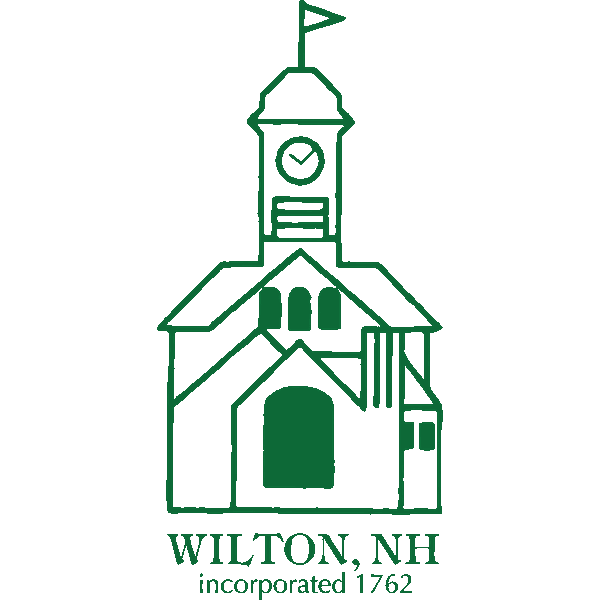

This district provides a location for the establishment of industrial facilities and operations to improve employment opportunities and broaden the tax base in the Town of Wilton.
All industrial establishments will meet the following provisions.
The Industrial District encompasses the following areas within the Town of Wilton:
A building or structure may be erected, altered or used, and a lot may be used or occupied for any of the following purposes, provided the use meets the performance standards of this ordinance:
All new construction or development within the industrial district shall meet the following requirements.
Two (2) acres of land excluding wetlands and land contained within the one hundred (100) year floodplain. (Amended March 1992, March 2004.)
Two hundred (200) feet on a Class V or better road.
A maximum of sixty percent (60%) of the gross area of any lot shall be occupied by buildings, parking and roadways. Total lot impervious coverage (buildings, parking area and roads) shall be forty (40) percent within the Aquifer Protection District. Industrial buildings, structures and parking areas in existence as of March 13, 1990 that exceed the permitted lot coverage within the district may be maintained at or rebuilt to the existing level. Any increase in impervious area will not be permitted. (Amended March 1992.)
The setbacks within this district shall not be:
(Amended March, 1991.)
Buffer zones shall be provided between industrial establishments and surrounding uses as follows:
Maximum structure height is forty-five (45) feet or two (2) stories.
Off-street parking facilities shall be provided following the standards established in the Site Plan Review Regulations.
Any lot with frontage on NH Route 101 shall be accessed by any other street or side road available and not by NH Route 101 unless no other alternative exists. If no other access is available, entrance and exit for such lot(s) shall be limited to one (1) curb cut on NH Route 101 for each lot-of-record existing as of March 8, 1988. If access to a lot is available by a street or side road other than NH Route 101, access to the lot shall be taken from the street or side road. As each lot is developed within this district, provision shall be made during the Site Plan Review process for the lay-out and construction of streets or side roads as the Planning Board shall determine necessary to permit travel between adjacent lots without accessing NH Route 101. To encourage shared lot access, where at all possible and practical, the location of all accessory street or roadway curb cuts shall be situated to allow adjacent lots to also take advantage of or share the same point of access along the street or roadway. Access to any Town road or State highway shall require Town or State permit approval.
Industrial establishments intending to be served by the public water supply system shall be reviewed by the Planning Board to ensure that the proposed use would not require more than ten percent (10%) of the available capacity as determined by the system's current safe yield and average daily water usage at the time of the proposed development. In any circumstance, where the Town of Wilton may require professional assistance or additional information to make a determination of compliance, the developer shall be required to pay the costs associated with obtaining this assistance.
In areas not served by the public water system, industries shall obtain their own water supply. In cases where industries will be utilizing a private well to supply adequate water for manufacturing and employee use, the following performance standards shall be applied in an effort to avoid depletion of water supplies for neighboring uses:
The developer may conduct additional hydrogeological studies of the site to determine the actual location and extent of the groundwater, the capacity for groundwater supplies and the impacts on surrounding groundwater users at his own cost. The Planning Board may modify the above limits based on the results of the hydrogeological testing and the determination that sustained use of the water supply will not unreasonably reduce the water supply to adjacent users.
Industrial uses shall be permitted to generate traffic in keeping with the character of the roadway from which the use has access and egress, according to the following schedule:
| Street Access | Allowed Trip Generation per Acre |
|---|---|
| Class IV and Class V Roads | 0 - 10 Average Daily trips |
| Class I and Class II Roads | 0 - 150 Average Daily Trips |
Residential uses are not permitted in the Industrial District.
(See also section 4.4)
In the event that a lot-of-record existing as of March 8, 1988 cannot satisfy the minimum lot or buffer requirements set forth in section 8.2 because of its configuration, the Zoning Board may permit a reduction in these requirements (except for section 8.2.3, Lot Coverage) by special exception. The permitted reduction in the requirement the lot-of-record cannot meet in these circumstances is designed to permit a proposed use in accordance with the objectives and purpose of this district.